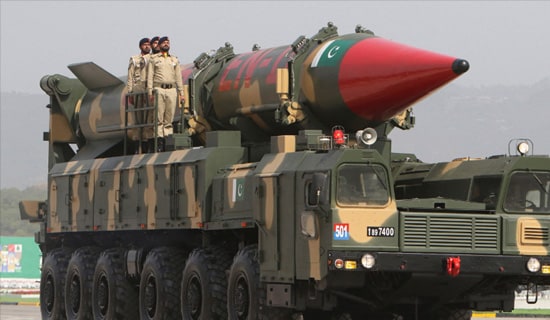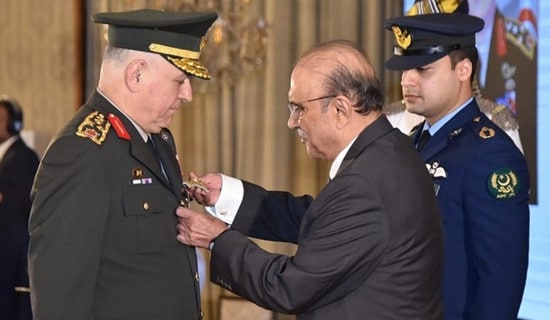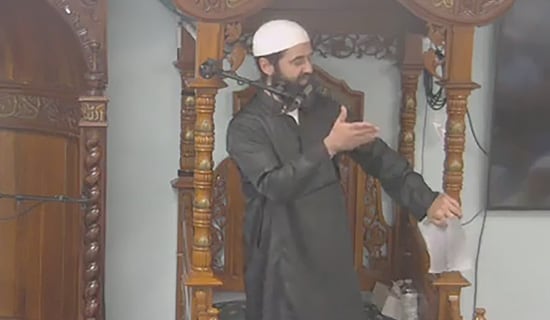Introduction
On March 30, 2024, Zabihullah Mujahid, the spokesman of the Islamic Emirate of Afghanistan (IEA, i.e., the Afghan Taliban), sought to deny claims that Iran is recruiting Afghans into the Fatemiyoun Brigade, saying that the Taliban's relations with Iran are positive and no country is permitted to recruit forces or conduct military activities in Afghanistan.[1] He added: "The issue with the Iranian forces or the Fatemiyoun group is not correct. In Afghanistan, such activities are not allowed, and countries are not supported or permitted to carry out military activities here."[2]
Zabihullah Mujahid's statement is far from truth. Media reports in recent years have noted Iran's regular recruitment of Afghan nationals and Afghan expatriates and refugees in Iran to fight in Syria. While it is correct that the Taliban came to power in August 2021, the case remains that the Taliban has had an understanding with Iran since at least as early as 2011, facilitating Iran's recruitment of fighters in Afghanistan. In February 2024, a new report published by the Human Rights Activists in Iran (HRAI), a group of Iranian human rights activists, sheds fresh light on Iran's use of child soldiers and adults from Afghanistan as part of Iran's proxy militias fighting in the Middle East.
From 2002 to 2021, when the Taliban were waging jihad against the Afghan republican governments and forces of the U.S. and the rest of NATO, Qassem Soleimani, the chief of the elite Qods Force of the Islamic Revolutionary Guard Corps (IRGC) of Iran, built a network of fighters in Afghanistan as part of the Fatemiyoun Brigade, which existed in areas under the Taliban control. While the international media was focused on the Middle East, Soleimani's role in establishing and leading the Fatemiyoun Brigade in Afghanistan was not reported by Afghan or foreign media.
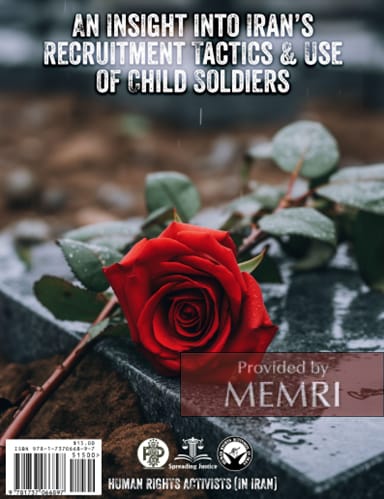
However, this veil began to be lifted soon after the killing of Qassem Soleimani in a January 3, 2020 U.S. missile strike in Baghdad. Roznama Ummat, an Urdu-language Pakistani newspaper known for its pro-Afghan Taliban stance, reported the day after Qassem Soleimani's assassination: "There are thousands of volunteers from the Fatemiyoun Brigade, who are trained by General Qassem Soleimani and who can undertake retaliatory action against American forces, in Afghanistan."[3]
"The chief of the Qods Force [General Soleimani] played an important role in the Iran-Taliban understanding," the Roznama Ummat said about an understanding struck sometime in 2011.[4] "Qassem Soleimani not only played a role in arranging a meeting between the former Taliban emir Mullah Akhtar Mansour and key officials of Iran, but became their interlocutor too," it noted.[5] Mullah Akhtar Mansour, who succeeded Mullah Mohammad Omar as IEA emir, went to Tehran to meet secretly with the Iranian leaders and was killed when returning from Iran in Baluchistan province of Pakistan in a U.S. drone strike in 2016.[6]
Even before Soleimani's assassination, Mirwais Afghan, perhaps the lone Afghan journalist to tweet about the Iranian recruitment of Shi'ites from Afghanistan and Pakistan to fight in the Middle East, said in 2015: "Senior officials in Kabul confirm that Iranian embassy in Kabul is directly involved in sending Hazara Shias to Iran for military training"; "Afghan lawmaker claims Afghan airlines takes people (Shi'ites) from Kabul via Iran to Syria, Baghdad & Najaf [to] fight"; "So far, 100's of Afghan Hazaras who went to Iran for job seeking, have been sent to Syria by Iranian govt. to fight for Assad regime"; "#Iran: Funeral prayer of 5 Afghan Hazaras & 4 Pakistani Shias killed fighting for Syrian regime"; "1500 Shia Afghan Hazaras are fighting in #Syria under the banner of #FatimyunBrigade while 700 have been killed so far."[7]
In August 2022, the Kuwait daily Al-Qabas reported that the IRGC had dispatched three units of the Afghan Fatemiyoun Brigade to Daraa City in southern Syria, which comprised 350 men, under the command of "a senior member of the Afghan militias named Hikmatullah Herati."[8] On August 27, 2022, the Syrian opposition website Horan Free League – citing the Al-Qabas report – further revealed that the Fatemiyoun Brigade had had a base since 2014 in the "Triangle of Death – Damascus-Daraa-Quneitra," and that Iran was building another base near the border with Jordan.[9] In September 2022, it was also reported that IRGC officials were training Afghan militias to operate drones at the airport at Palmyra in Syria.[10]
This contradicts Taliban spokesman Zabihullah Mujahid's statement seeking to deny the Iranian recruitment of Afghans to fight in the Middle East as part of its Fatemiyoun Brigade. Of all Afghan Taliban leaders, Zabihullah Mujahid is the most knowledgeable on these matters, especially because was one of the two lead spokesmen of the Taliban during the two decades of jihad against America.
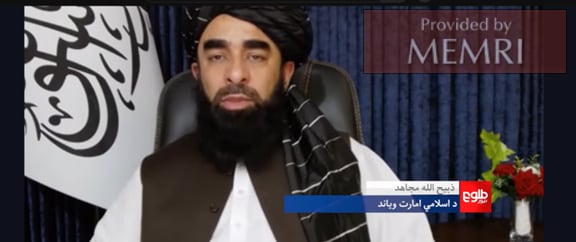
Taliban spokesman Zabihullah Mujahid
In February 2024, the Human Rights Activists in Iran (HRAI), a non-governmental organization founded by Iranian rights advocates in 2005, published a report, titled "An Insight Into Iran's Recruitment Tactics And Use Of Child Soldiers," shedding new light on the Fatemiyoun Brigade, especially its recruitment of Afghans and children.[11]
Noting that Iran's use of child soldiers has been known since the Iran-Iraq War, when about 10 percent of Iranian prisoners in Iraq turned out to be minors, the report says that Iran has been forcibly conscripting legal and illegal immigrants, especially Afghan children, into military service with the promise of financial rewards and legal residency. Iran has deployed Afghan children to participate in combat operations in Syria, it says, as part of the Fatemiyoun Brigade.
The Origins And Goals of The Fatemiyoun Brigade
According to the HRAI report, the Fatemiyoun Brigade was formally established in 2013 by Alireza Tavasoli aka Abu Hamid. It is a successor to the Defenders of the Haram, which emerged during the 1979 Islamic Revolution. Its "early days witnessed a diverse composition within the militia, comprising Mujahid Afghans who fought during the Soviet Invasion of Afghanistan" in the 1980s, a point of which Zabihullah Mujahid must be aware.
SUPPORT OUR WORK

"Joining the ranks of the Fatemiyoun often necessitated a reputable reference, spurring the establishment of extensive networks across Afghanistan to facilitate this process. Furthermore, Iranian-operated offices were identified as pivotal hubs tasked with recruiting individuals, including Afghan children and youth, into the brigade's fold," the report states. It also quotes journalistic reports as saying that to join the Fatemiyoun Brigade, one needed "a good reference" which "created an army of references inside Afghanistan to serve this purpose."
The Fatemiyoun Brigade is driven by the ideological consideration that "geographic boundaries have no meaning in Islam" – as all Islamist and jihadi forces believe. At an international conference in the Iranian city of Mashhad in August 2019, the report says, the Fatemiyoun pledged to "continue to work until the 'destruction' of Israel and the creation of a 'new Islamic civilization.'" Highlighting the ideological orientation of the militia, the report notes that while Iran "extols the brigade as heroic stalwarts in the fight against ISIS, detractors within Afghanistan cast them as proxies serving Tehran's interests, antagonistic to Western influence."
Statistics On The Strength Of The Fatemiyoun Brigade
The HRAI report cites statistics that reveal the organizational strength of the Fatemiyoun Brigade, especially in the context of the Syrian war post-2011. According to the report, "specialized units, including reconnaissance, intelligence, sniper, and unmanned aerial vehicle units" are part of the Fatemiyoun Brigade's organizational structure, while the proxy militia "has been bolstered by heavy weaponry, including Russian T-72 and T-90 tanks" since 2016.
The report also quotes Hossein Hamdani, one of the commanders who died in Syria, as saying in October 2014 that 42 groups and 128 battalions were formed "consisting of approximately 70,000 young individuals from various Islamic sects, including Alawites, Sunnis, and Shi'ites" for maintaining "security in Syrian cities and provinces." Hamadani also noted that 130,000 Basij fighters were trained "ready to be deployed to Syria." These statistics are in the vicinity of the ones reported in September 2018 by Samad Rezaei, a Fatemiyoun commander, who said at least 80,000 individuals had been sent to Syria as part of the Fatemiyoun battalions, of which more than 2,800 were either disabled or killed, the report notes.
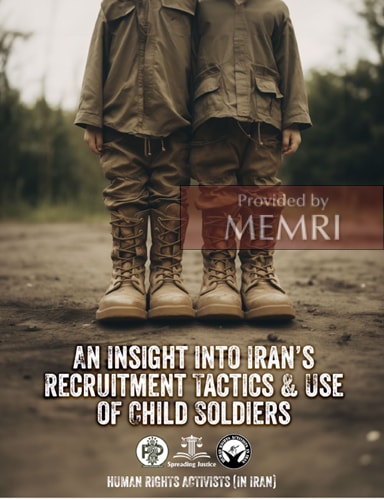
The report also says that the then Afghan government warned Iran that "the blood of the children of this country should not be shed to serve the interests of foreigners in other countries" after it emerged in January 2016 that more than 2,000 members of Fatemiyoun battalions were killed and 8,000 wounded in the Syrian civil war. Iran's then Foreign Minister Mohammad Javad Zarif estimated in 2018 that the Fatemiyoun Brigade had 5,000 fighters out of which 2,000 were deployed in Syria. By this time, more than 2,800 individuals were "killed or disabled" as part of the Fatemiyoun Brigade and other militias, the report states.
While reports of Iran's recruitment of Afghans can be traced to the Iran-Iraq War in 1980s, the HRAI report observes: "Today, the Fatemiyoun Brigade predominantly consists of the second generation of Afghan immigrants to Iran, with reports estimating that over 20,000 individuals have undergone training and organization within its ranks. The evidence suggests that Afghan immigrants living in Iran, as well as those seeking asylum, employment, or transit through the country, form the core membership of the brigade."
Iran's Recruitment Of Child Soldiers
The HRAI report shows that the Islamic Revolutionary Guard Corps (IRGC) operated "unofficial offices" in Afghanistan for the recruitment of fighters for the Fatemiyoun Brigade. It says: "Regrettably, the IRGC has a history of employing children, both Iranian and Afghan, utilizing them for military training and subjecting them to rigorous ideological indoctrination, particularly during the Iran-Iraq war and through the establishment of the Basij organization."
While the IRGC's recruitment of adults is known, its recruitment of Afghan children remains shrouded in mystery. The report says: "Though the precise number of child soldiers within the Fatemiyoun ranks remains unclear, evidence indicates that the IRGC has utilized children under the age of 18, and even as young as 15, as soldiers to participate in the Syrian war."
The report also cites Human Rights Watch (HRW) as saying that "eight Afghan children" were part of the Fatemiyoun Brigade in October 2017 and "Tragically, all eight of these child soldiers lost their lives in the conflict, with four of them being only 14 years old at the time of their deaths." It also reports that a 16-year-old Afghan child soldier in the Fatemiyoun Brigade was killed in Syria. According to the Iranian website Harim-e-Haram, a 15-year-old child soldier named Mohammed Bakhshi fighting as part of the Fatemiyoun Brigade was killed in the Syrian war.
The report cites testimonies of Afghan teens obtained by HRW who were sent by Iran to fight in Syria. One of two 17-year-old Afghan teenagers reported that his cousin, along with 20 others, were sent back to Afghanistan after not being found fit. A 14-year-old child testified to HRW that Iranian military agents at the border arrested 150 Afghans and asked them to volunteer to fight in Syria, but they refused and were sent back to Afghanistan.
The report also has a list of 19 child soldiers, identified with photos and their graves in Iran, as an appendix and a map locating the graveyards.

The HRAI report carries a map identifying cemeteries where child soldiers are buried.
Mahan Airlines, an Iranian airlines, has been on the U.S. Treasury Department's sanctions list since 2013 over its role "in the transfer of troops and military equipment to Syria." According to HRAI report, American officials "highlighted the recruitment of child soldiers by the Fatemiyoun and coercing them to fight in Syria" and "Mahan Airlines flew the bodies of hundreds of Fatemiyoun Division fighters, including those of the child soldiers, from Syria back to Iran..."
In December 2020, the U.S. Treasury Department sanctioned Al-Mustafa International University, which is based in Iranian city of Qom, after it emerged that "thousands of Afghan students are trained under the cover of this institution, and then they are recruited by the Fatemiyoun Brigade for the proxy war." According to the report, Alireza Arafi, the director of Al-Mustafa International University, "confirmed in August 2017 that many graduates from their institution had voluntarily joined the Fatemiyoun and Zainbiyoon forces and had become martyrs or veterans..." Zainbiyoon Brigade refers to Shi'ites from Pakistan, while Haideriyoon Brigade refers to Shi'ites from Iraq.
The HRAI report identifies four main training centers where the Fatemiyoun Brigades and other proxy militias are trained by IRGC: a) The Pazuki IRGC training barracks based at Pishya, south of Tehran province in Jalil Abad; b) Sadoughi barracks based in Jafarzadeh Blvd. in Yazd; c) Basij Imam Reza Specialized Training Center, Mashhad; d) Ahmad Ibn Musa barracks based Fars province, situated at 17-km from the Shiraz-Isfahan highway. Of these, Mashhad-based Basij Imam Reza Specialized Training Center is the "main headquarters of the Quds Force branch that focuses on Afghanistan and Pakistan."
* Tufail Ahmad is Senior Fellow for the MEMRI Islamism and Counter-Radicalization Initiative.
[1] YouTube.com/@TOLOnews, March 30, 2024.
[2] YouTube.com/@TOLOnews, March 30, 2024.
[3] MEMRI Special Dispatches Series No. 8478, Urdu Daily Says Soleimani's Death Could Be Avenged In Afghanistan: 'Thousands Of Volunteers... Trained By General Qassem Soleimani Are Present In Afghanistan', January 8, 2020.
[4] MEMRI Special Dispatches Series No. 8478, Urdu Daily Says Soleimani's Death Could Be Avenged In Afghanistan: 'Thousands Of Volunteers... Trained By General Qassem Soleimani Are Present In Afghanistan', January 8, 2020.
[5] MEMRI Special Dispatches Series No. 8478, Urdu Daily Says Soleimani's Death Could Be Avenged In Afghanistan: 'Thousands Of Volunteers... Trained By General Qassem Soleimani Are Present In Afghanistan', January 8, 2020.
[6] Dawn.com (Pakistan), May 22, 2016.
[7] MEMRI JTTM Report, Afghan Journalist's Tweets Offer Insights Into Iranian Recruitment Of Afghans To Fight In Syria And Iraq, August 18, 2015.
[8] MEMRI JTTM Report, Arab Sources In The Gulf And The Syrian Opposition: Iran Is Deepening Its Hold On Southern Syria, Deploying Afghan Fatemiyoun Brigade Forces Along Border With Jordan, August 30, 2022.
[9] MEMRI JTTM Report, Arab Sources In The Gulf And The Syrian Opposition: Iran Is Deepening Its Hold On Southern Syria, Deploying Afghan Fatemiyoun Brigade Forces Along Border With Jordan, August 30, 2022.
[10] MEMRI JTTM Report, Iran's IRGC Reportedly Training Afghan Shi'ite Militia In Drone Use In Syria, September 23, 2022.
[11] En-hrana.org, accessed April 1, 2024.


